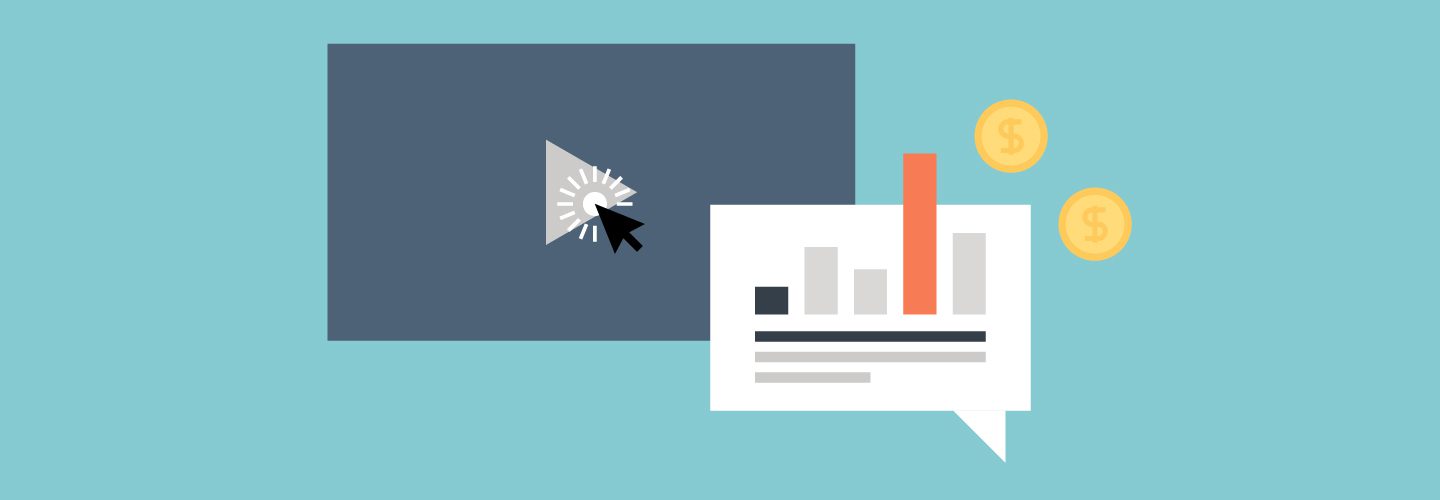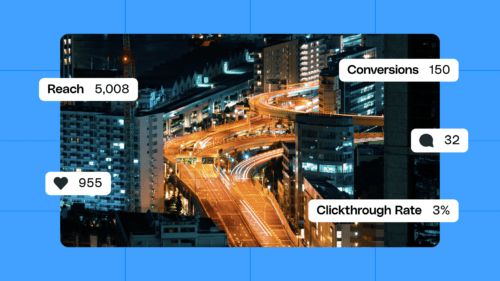You’ve mastered the YouTube algorithm. Your channel’s SEO is in tip-top shape. You’ve even decoded YouTube’s analytics. Now comes the moment you’ve been waiting for—it’s time to make some money doing what you love. YouTube’s monetization policy changes from time to time and that can seem scary. We promise you have nothing to fear—we’re here to walk you through the ins and outs of the entire YouTube monetization process. Equipped with knowledge straight from YouTube’s amazing community of creators, you’ll be ready to grow your channel in no time. But first, let’s go through some of the basics of how to enable YouTube monetization. How do you even start? Check out our plans here!
How do I qualify for YouTube Monetization?
First, to qualify for monetization, your channel has to have at least 4,000 hours of public watch time within the last year and at least 1,000 subscribers. This policy went into effect at the beginning of 2018 and is another way for YouTube to prioritize watch time (as opposed to view count, which was the platform’s previous focus). Since YouTube ultimately wants to keep users on the platform for as long as possible, watch time has become more and more valuable to creators. Luckily, we have a guide to help you start and grow your YouTube channel. Based on conversations in the r/youtubers and r/youtube subreddits, the 1,000 subscribers/4,000 hours of watch time benchmarks are actually pretty manageable! Plus, once you’ve implemented an effective SEO strategy, it won’t be long before you hit those magic numbers.
What counts as “Public watch time?”
“Public watch time” is the total number of hours users have spent watching your channel’s public videos. Private, unlisted, or deleted videos do NOT count toward this number.
Tip: Do NOT try to game the system
As we’ve said before, do not try to game the system. Your monetization application could be denied if your channel shows any signs of engaging in “sub4sub” or “view4view” strategies. In other words, if you’re subscribing to other people’s channels in exchange for subscriptions to your channel, or watching other channels’ videos in exchange for watch hours on your own channel, YouTube could find out and deny (or disable) your monetization. So don’t do it. YouTube is a search engine, just like Google, so sure, there are ways to improve your visibility, but if you do anything to game the system, YouTube’s advanced algorithm will catch it and penalize your channel. Engaging in shady YouTube tactics is a risky move and a waste of your time. Trust your creative instincts and focus your efforts on producing content that you love, and you’ll get the subscribers you deserve.
Prep Your Channel for Monetization
Before you hit the “Enable” button to monetize your channel, there are a few things you can do to make sure that your channel has the best possible chance of getting approved for monetization. It can take up to 30 days for YouTube to review your channel, and you have to wait an additional 30 days to apply if your application is denied, so don’t take any chances—you want revenue to start coming in as soon as possible. One of the most common reasons that YouTube doesn’t approve monetization applications is duplication. (By the way, if your application is denied, YouTube will provide a reason on your monetization page, but the explanations can be a little vague). Now let’s talk about how to avoid this issue. When using stock footage and audio, make sure that you have all of the right licenses in place. If you’re using Storyblocks content, this is actually very easy because each audio or video clip or comes with a license that you can download at any time. It’s important to know where to have and understand these licenses even if you’re not monetizing your channel.
3 Easy Steps: How to Enable Monetization on YouTube
You’ve reached the required number of subscribers and watch hours, and you’ve checked your channel for red flags—now what? It’s time to learn how to enable monetization on YouTube.
- Click on YouTube Studio in the dropdown after you click on your icon in the top right corner of the screen.
- Once you’re in YouTube Studio, find the Channel menu on the left-hand side of your screen, and click on Monetization.
- Finally, in the Monetization window, click Start.
Once you’ve done this, you’ve accepted the YouTube Partner Program terms. You just have to sign up for AdSense or connect an existing account. This is what ultimately allows your channel to earn money. YouTube will then prompt you to set your monetization preferences. Don’t worry too much about this step—you can change your monetization preferences later and customize it so that you’re only monetizing certain videos.
Wait for Monetization Approval
Unfortunately, monetizing on YouTube isn’t as simple as clicking a button. It typically takes 30 days for YouTube to review an application. However, a backlog does build up from time to time. This is important to keep in mind since it means that you probably won’t be able to start generating revenue for at least 30 days. All you can do is continue to hustle during this waiting period. Keep posting regularly (the YouTube algorithm rewards channels that post consistently), make sure you’re still focusing on SEO, and remain engaged with your audience. If you allow your channel to lag during this time, it could really hurt you in the long run. Your channel can always benefit from additional subscribers and watch time—both of which can open up new revenue streams in addition to monetization.
There are Other Monetization Options
Monetizing through YouTube is only one of the ways that you can make money on YouTube. There are actually several others, but enabling YouTube monetization is a great, fairly easy entry point. The subscriber and watch time threshold for YouTube ads is pretty low, so it allows your channel to pick up steam when it’s still in its infancy. As you continue to gain more followers and increase watch times, however, you should consider additional monetization options—especially if you have a very loyal and engaged audience.
1. Patronage
Patreon is one of the most popular online patronage platforms for YouTube creators. Patreon allows your loyal followers to pay a certain amount of money each month for access to exclusive content. You can have multiple tiers of patrons, providing them with anything from behind-the-scenes footage to completely new content (that non-paying members can’t see). Some YouTubers give their patrons access to videos a day early, others even throw in some one-on-one time with the creators themselves. Patreon is a fantastic option for creators with a loyal fanbase. More often than not, that loyalty is gained through consistent communication and engagement with your followers.
2. Merchandise
People love merch. But before you start printing 1,000 t-shirts for all 1,000 of your subscribers, test the waters a bit. Ask your audience if they’re interested in buying merchandise from you. You can suggest types of merchandise and even ask them to comment with products that they’d like to buy. Selling merch is especially great if you and your followers use specific lingo, catchphrases, or have inside jokes. Once you start selling merch, you can also include it in contests, giveaways, or even add it to one of your Patreon tiers.
3. Affiliates
The good news is that it’s pretty easy to get into an affiliate program. The earnings are just lower than what you’d receive with a paid sponsorship. Once you sign up for an affiliate program with a specific brand, you’ll receive a unique link or discount code that your followers can use when shopping with that brand. Every time your link or code is used, you’ll earn a small commission. Mention the affiliate code in your videos and also include it in your video descriptions to maximize earnings.
4. Product Features
Product features are a great stepping stone toward paid sponsorships, but they may not result in actual cash. As you start gaining a larger following, brands might send you their products to feature and/or review in your videos. Free stuff is great, right? You don’t even have to wait for brands to reach out to you—go ahead and pitch yourself to potential sponsors. Just make sure that you pitch to companies that make sense for your channel (although, you may start receiving random product feature requests along the way).
5. Paid Sponsorships
Paid sponsorships are the goldmine for making money on YouTube. This is when brands pay you to mention or endorse their product in your videos. We’re going to be completely honest with you—this is a hard goal to reach. But it is never too early to start pitching yourself to companies. Engage with them on social media, show them how you would help their brand, and provide examples of successful product sponsorships or affiliate programs you’ve done in the past. Even if you haven’t quite hit the desired subscriber count yet, you’ll still put yourself on brands’ radars. Again, just make sure that the companies you seek out make sense for the content you produce.
Hustle, Hustle, Hustle
Monetization can be a tricky game, but just remember to keep up the hustle! You’re in it for the long haul, so make content that you are truly passionate about. YouTube creators are some of the busiest people out there, so set yourself up for success by using high-quality stock footage and After Effects templates. Don’t skimp on the audio, either—viewers appreciate sound effects and music that match the tone of the video (and it won’t cost you an arm and a leg if you go with stock). In video production, your time is just as valuable as your money, so save on both with stock media from Storyblocks.



